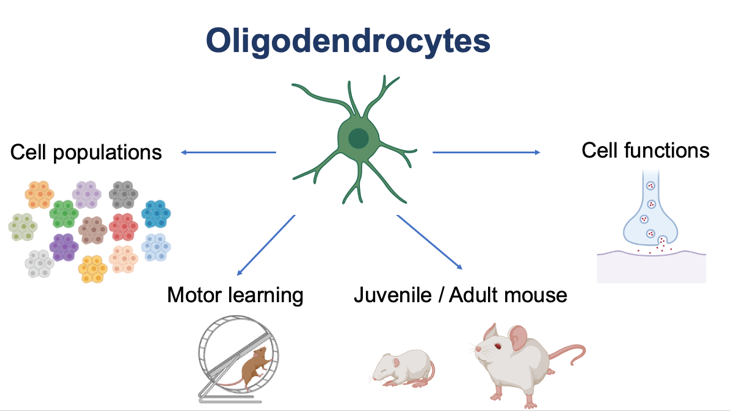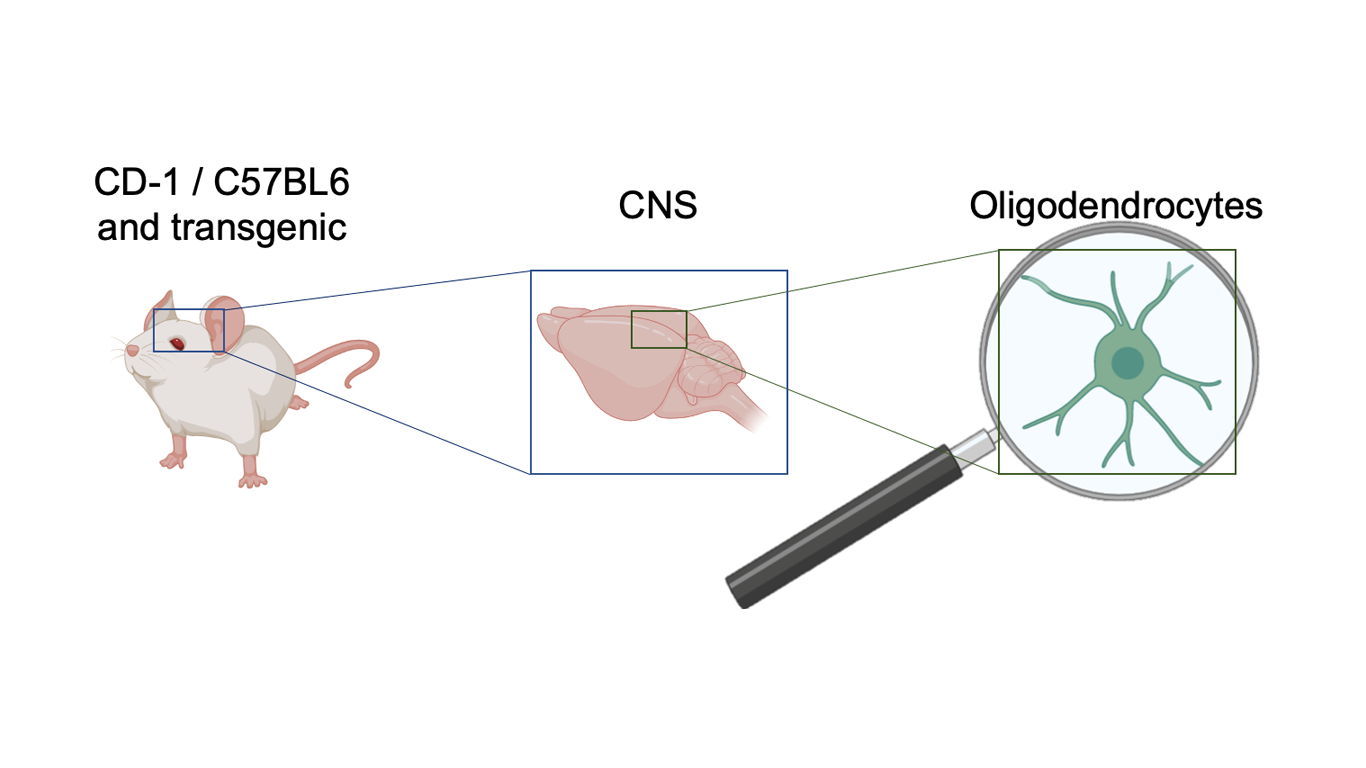Heterogeneity of Oligodendrocyte cell lineage
Abstract
Oligodendrocyte’s main functions are to provide support and insulation to axons in the Central Nervous System and they do this by creating the myelin sheath. Previous studies have reported oligodendrocytes (OL) as a largely homogeneous population executing its functions throughout the CNS [1] while these cells were originally described as morphologically heterogeneous [2]. A new article by Marques et al. [3] pioneered studies on oligodendrocyte’s heterogeneity identifying 13 distinct populations in mice CNS. This study reveals the dynamics of oligodendrocyte differentiation and maturation, uncoupling them at a transcriptional level and highlighting oligodendrocyte heterogeneity in the CNS.
Oligodendrocyte’s heterogeneity has been studied in several mice strains: wild-type (CD-1 or C57BL6) and transgenic mice (to label the complete OL lineage) were used for a single cell capture. Cells were isolated from ten distinct regions of the mouse juvenile and adult CNS, between post-natal day 21 and 60 of both sexes, including grey matter, white matter and striatum. A single cell RNA sequencing and a hierarchical clustering analysis were performed on 5072 cells. These analyses resulted in 50 genes that better differentiate OL lineage and 13 different populations, 12 of which have been placed in a narrow differentiation pathway through a pseudo-time analysis. The pathway connects the one population of Oligodendrocyte Precursor Cells (OPC) to the six populations of Mature Oligodendrocytes (MOL) passing through: COP (Oligodendrocyte Precursors), NFOL (Newly formed Oligodendrocytes) and MFOL (Myelin-forming Oligodendrocytes). The 13th population was found along vessels and consist of Vascular and Leptomeningeal Cells (VLMC) distinct from OPCs and segregated from all oligodendrocyte lineage cells.

Figure 1
Among the 50 genes, Itpr2, encoding an intracellular Ca2+ channel, was one of the most specific to oligodendrocytes and exhibited close to 100% overlap with Sox10 positive cells. ITPR2+ oligodendrocytes are present in regions of active differentiation and increase in mice undergoing motor learning. To investigate the potential function of ITPR2+ cells in the adult brain, their dynamics were investigated in the corpus callosum of mice involved in complex wheel experiments, a process that requires active myelination [4]. Running on the wheel leads to an increase in the number of oligodendrocytes after 8 days. Increased motor skills were already apparent after 2 days in wild-type mice, but not in mutant mice that were unable to synthesize new myelin. Mice that ran on the complex wheel for 2 days, as compared with non-runners show an increase in the numbers of cells that co-express Itpr2 and Sox10 by almost 50%.
It was not possible to identify region or age (juvenile versus adult) specific subpopulations of oligodendrocytes. There is a common trajectory of differentiation, in juvenile and adult mice, between the various regions of CNS. Thus, regions were classified as: immature, intermediate and mature following the distribution of cell types and the different timing of cells maturation during postnatal development.
A gene ontology analysis was performed to investigate the specific function of the oligodendrocytes. Mature oligodendrocyte populations shared the expression of many genes, some were differentially enriched within populations indicating segregation of MOL1 to MOL4, enriched in lipid biosynthesis and myelination genes (Far1 and Pmp22), from MOL5 and MOL6 enriched for synapse parts such as Grm3 (metabotropic glutamate receptor, mainly enriched in MOL6) and Jph4. Further analyses on neighbouring communication showed that potassium channels and TRPs were also expressed in a cell type–specific manner, displaying a scattered distribution within populations. Most glutamate receptor subunits were expressed throughout oligodendrocyte lineage cells, but there was preferential expression in some populations. Thus, the communication of mature oligodendrocytes might be mediated through specific receptors and channels, following synaptic input or vesicular release.
In conclusion, Marques et al. provide us with a new high-resolution transcriptional landscape that finally awards heterogeneity of oligodendrocyte cell lineage. Major limitation of this study is related to the age of mice taken into account, it doesn’t go further than 90 days and there’s no evidence in older mice where the situation might change a lot. It is also true that, based on these studies, myelin disorders such as multiple sclerosis might lead to new insights, research advances and eventually suggest novel targets for treatment. Along the past years, oligodendrocytes might have been neglected by basic research in favour of neurons, but this article turn on a new spotlight on the complexity of this cell type and the importance of electrical insulation to optimize neural communication and motor skills development.
References
- Kessaris et al., Nat. Neurosci. 9, 173–179, Competing waves of oligodendrocytes in the forebrain and postnatal elimination of an embryonic lineage, (2006)
- d. Rio-Hortega, Mem. Real Soc. Esp. Hist. Nat. 14, 5–122, (1928)
- Marques et al., Science, 352, 1326-1329, Oligodendrocyte heterogeneity in the mouse juvenile and adult central nervous system, (2016)
- A. McKenzie et al., Science 346, 318–322, Motor skill learning requires active central myelination, (2014)

